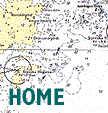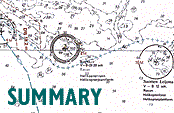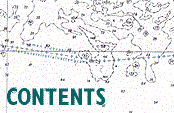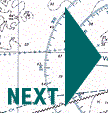SUMMARY |
 |
This is the final report by the Joint Accident Investigation Commission on
the background and sequence of events leading to the foundering of the
ro-ro passenger ferry ESTONIA shortly before
0200 hrs on 28 September 1994, and on the subsequent rescue operation 1). The
vessel was on a scheduled voyage from Tallinn to Stockholm with 989 people
on board.
 The report consists of four parts. The first part gives factual information on
the accident, the rescue operation, and on the ESTONIA and her operation. It
includes a summary of testimonies by the survivors. The second part presents
background information, or associated facts related
to the accident such as a short development history of the passenger ferry traffic
in the Baltic and a review of bow door failures. The third part presents the
results of the analysis and evaluation by the Commission of the accident and the
rescue operation. This part incorporates short accounts of the separate
investigations carried out on behalf of the
Commission. The detailed research reports and
copies of the most important documents are collected in a separate Supplement.
The fourth part presents the conclusions based on the work carried out by and for
the Commission. The report consists of four parts. The first part gives factual information on
the accident, the rescue operation, and on the ESTONIA and her operation. It
includes a summary of testimonies by the survivors. The second part presents
background information, or associated facts related
to the accident such as a short development history of the passenger ferry traffic
in the Baltic and a review of bow door failures. The third part presents the
results of the analysis and evaluation by the Commission of the accident and the
rescue operation. This part incorporates short accounts of the separate
investigations carried out on behalf of the
Commission. The detailed research reports and
copies of the most important documents are collected in a separate Supplement.
The fourth part presents the conclusions based on the work carried out by and for
the Commission.
1) If not otherwise stated all times in the report are given in Estonian time
= UTC + 2 hrs.
|
 |

Part 1 Factual information
|
 |
Chapter 1 gives facts on the most important events during the accident
voyage, on the accident and very briefly on the rescue operation.
Chapter 2 describes the operating history of the vessel under
the Finnish and Estonian flags with emphasis on the organisation of the
operations and on the experience of the partners
in the Tallinn - Stockholm traffic. Chapter 2 includes also general statistics on
wave conditions in which the vessel had been sailing during her life.
 Chapter 3 is a general technical description of the ESTONIA focusing
on the bow visor and ramp installations with detailed data on the design and
construction of their locking systems, including the monitoring and control. The
history of the vessel and in particular of the bow visor and the ramp installations with
regard to maintenance, modifications, damage and repairs is reviewed.
Emergency and life-saving equipment and arrangements on board are outlined in 3.4.
The vessel was built to comply with several international conventions which are
listed, and the compliance was documented by certificates. The collision
bulkhead compliance is dealt with in some detail. Certificates valid at the time of the
accident are reviewed and the changes in wording of the most important
certificate, the Passenger Ship Safety Certificate, which has to be renewed every
year, are explained in detail. Chapter 3 is a general technical description of the ESTONIA focusing
on the bow visor and ramp installations with detailed data on the design and
construction of their locking systems, including the monitoring and control. The
history of the vessel and in particular of the bow visor and the ramp installations with
regard to maintenance, modifications, damage and repairs is reviewed.
Emergency and life-saving equipment and arrangements on board are outlined in 3.4.
The vessel was built to comply with several international conventions which are
listed, and the compliance was documented by certificates. The collision
bulkhead compliance is dealt with in some detail. Certificates valid at the time of the
accident are reviewed and the changes in wording of the most important
certificate, the Passenger Ship Safety Certificate, which has to be renewed every
year, are explained in detail.
 Chapter 4 describes the arrangement of operations on board and working
routines, and gives summaries of qualifications of each deck officer and engineer
on duty on the accident voyage. The safety organisation is outlined
comprehensively. Chapter 4 describes the arrangement of operations on board and working
routines, and gives summaries of qualifications of each deck officer and engineer
on duty on the accident voyage. The safety organisation is outlined
comprehensively.
 Chapter 5 is the second chapter directly dealing with the accident. The
environmental conditions: wind, sea state, visibility and current during the
accident voyage are defined on the basis of information obtained from meteorological
institutes. The chapter concludes with an estimate of the
ESTONIA's speed during the voyage. The speed profile has
been constructed from the DGPS recording of the passenger ferry SILJA
EUROPA's speed and is compared with observations of the actual speed. Chapter 5 is the second chapter directly dealing with the accident. The
environmental conditions: wind, sea state, visibility and current during the
accident voyage are defined on the basis of information obtained from meteorological
institutes. The chapter concludes with an estimate of the
ESTONIA's speed during the voyage. The speed profile has
been constructed from the DGPS recording of the passenger ferry SILJA
EUROPA's speed and is compared with observations of the actual speed.
 Chapter 6 is a summary of all statements made by the survivors and
covers their experience from the time just prior to the accident until their rescue.
The chapter is divided into two parts. The
first part reports on statements made by the individual surviving crew members
who were on duty during the accident, the second part summarises statements
from both passengers and crew members off duty. Chapter 6 summarises as closely
as possible the statements made by survivors, but specific details are not
necessarily regarded as facts and may differ from the Commission's statements in
other chapters. Chapter 6 is a summary of all statements made by the survivors and
covers their experience from the time just prior to the accident until their rescue.
The chapter is divided into two parts. The
first part reports on statements made by the individual surviving crew members
who were on duty during the accident, the second part summarises statements
from both passengers and crew members off duty. Chapter 6 summarises as closely
as possible the statements made by survivors, but specific details are not
necessarily regarded as facts and may differ from the Commission's statements in
other chapters.
 Chapter 7 begins with a general description of the rescue operation.
This description first deals with international agreements on the safety of life at sea
and then with the maritime search and rescue organisations of Estonia, Finland
and Sweden as well as the co-operation between these countries. Chapter 7 begins with a general description of the rescue operation.
This description first deals with international agreements on the safety of life at sea
and then with the maritime search and rescue organisations of Estonia, Finland
and Sweden as well as the co-operation between these countries.
 The section on the ESTONIA's distress message and distress traffic
describes the radio systems in use at the time of
the accident and the coast radio stations which were keeping watch on distress and
safety channels. The ESTONIA's entire distress traffic from 0122 hrs to 0130 hrs
on 28 September 1994 has been transcribed on the basis of the tape recordings made. The section on the ESTONIA's distress message and distress traffic
describes the radio systems in use at the time of
the accident and the coast radio stations which were keeping watch on distress and
safety channels. The ESTONIA's entire distress traffic from 0122 hrs to 0130 hrs
on 28 September 1994 has been transcribed on the basis of the tape recordings made.
 The section on the search and rescue operations begins with a
chronological list of the most important rescue
actions during the first hours. After this, the
operations undertaken by the vessels, helicopters and aircraft are described.
The section concludes with data on victims and survivors. The section on the search and rescue operations begins with a
chronological list of the most important rescue
actions during the first hours. After this, the
operations undertaken by the vessels, helicopters and aircraft are described.
The section concludes with data on victims and survivors.
 Part 1 ends with Chapter 8 which presents a detailed review of damage
to the wreck, the ramp and the visor with their attachments, as observed
visually during inspections with a submarine Remotely Operated Vehicle (ROV), the
diving operation and after the visor had been recovered and taken ashore. The
damage is illustrated with several photographs. The extent of the diving operation
is described and the divers' observations on the bridge and elsewhere in the
wreck concerning e.g. victims are summarised. The state of the
ESTONIA's life-saving equipment and emergency
beacons (EPIRBs) when found after the accident is specified in 8.10 and 8.11,
respectively. Part 1 ends with Chapter 8 which presents a detailed review of damage
to the wreck, the ramp and the visor with their attachments, as observed
visually during inspections with a submarine Remotely Operated Vehicle (ROV), the
diving operation and after the visor had been recovered and taken ashore. The
damage is illustrated with several photographs. The extent of the diving operation
is described and the divers' observations on the bridge and elsewhere in the
wreck concerning e.g. victims are summarised. The state of the
ESTONIA's life-saving equipment and emergency
beacons (EPIRBs) when found after the accident is specified in 8.10 and 8.11,
respectively.
|  |

Part 2 Associated facts
|
 |
Chapter 9 includes a general review of international co-operation and
conventions within the framework of the International Maritime Organisation
(IMO) and shortly describes the organisation of the Estonian, Finnish and Swedish
Maritime Administrations. The role of the classification societies and their
relationship with the ship owners, shipyards and the national administrations is
described. The problems recognised in safety of ro-ro vessels before the ESTONIA
disaster are pointed out with particular emphasis on the HERALD OF FREE
ENTERPRISE accident in 1987.
 Chapter 10 is a brief commercial and technical history of the ro-ro ferry
traffic in the Baltic. The chapter includes a list of passenger ferries put in traffic
between south-west Finland and the Stockholm region in Sweden by the Silja
Line and the Viking Line between 1959 and 1993, with the type of original bow
enclosure defined. Chapter 10 is a brief commercial and technical history of the ro-ro ferry
traffic in the Baltic. The chapter includes a list of passenger ferries put in traffic
between south-west Finland and the Stockholm region in Sweden by the Silja
Line and the Viking Line between 1959 and 1993, with the type of original bow
enclosure defined.
 Some of the incidents involving failure or part-failure of bow visor
attachments of Finnish and Swedish ro-ro passenger ferries in the Baltic and the
North Sea are summarised in Chapter 11. The type and extent of damage is indicated
in each case as well as the action taken after the accident. The incident of DIANA
II in January 1993 in the southern Baltic has been investigated in more depth
since she had a similar visor and attachment system design to the
ESTONIA's. Some of the incidents involving failure or part-failure of bow visor
attachments of Finnish and Swedish ro-ro passenger ferries in the Baltic and the
North Sea are summarised in Chapter 11. The type and extent of damage is indicated
in each case as well as the action taken after the accident. The incident of DIANA
II in January 1993 in the southern Baltic has been investigated in more depth
since she had a similar visor and attachment system design to the
ESTONIA's.
|  |

Part 3 Analysis and evaluation
|
 |
Chapter 12 opens the analysis part of the report. It presents an overview of
the separate investigations carried out for the Commission. These include
analysis of wave loads on the visor based on model tests and numerical
simulations, calculations of wave-induced motions and analysis of hydrostatic and
hydrodynamic characteristics during flooding and sinking of the vessel. The chapter
also summarises the various strength and metallurgic investigations carried out on
parts recovered from the visor and ramp installations and calculations of the
strength of the visor attachments.
 Chapter 13 is a main chapter in the report presenting the Commission's
views on the course of events starting from the preparations for the accident passage
and ending with the sinking of the ESTONIA. The chapter is based on an
analysis of witness statements (Chapter 6) and all technical observations and data of
which the main part is summarised in Chapters 3, 5, 8, 12 and 15. Chapter 13 is a main chapter in the report presenting the Commission's
views on the course of events starting from the preparations for the accident passage
and ending with the sinking of the ESTONIA. The chapter is based on an
analysis of witness statements (Chapter 6) and all technical observations and data of
which the main part is summarised in Chapters 3, 5, 8, 12 and 15.
 The possible deficiencies existing in the visor and ramp closure before
the accident voyage and their effect on the operation of the vessel are analysed
in 13.2.3. Separation of the visor and development of the list and sinking are
handled shortly in 13.2.5 and 13.2.6, respectively, while a more thorough
treatment is given in 13.5 and 13.6. The possible deficiencies existing in the visor and ramp closure before
the accident voyage and their effect on the operation of the vessel are analysed
in 13.2.3. Separation of the visor and development of the list and sinking are
handled shortly in 13.2.5 and 13.2.6, respectively, while a more thorough
treatment is given in 13.5 and 13.6.
 Actions on the bridge in the light of information available to the bridge
are analysed in 13.3, including an analysis of the effect of the
ESTONIA's speed on passenger comfort and the accident.
The time span considered is from the first signs of something being wrong at
about the time of changing watch at 0100 hrs until the end of the distress traffic at
0130 hrs. Actions on the bridge in the light of information available to the bridge
are analysed in 13.3, including an analysis of the effect of the
ESTONIA's speed on passenger comfort and the accident.
The time span considered is from the first signs of something being wrong at
about the time of changing watch at 0100 hrs until the end of the distress traffic at
0130 hrs.
 There were indicator lamps on the bridge showing locked or unlocked
visor and ramp, respectively. Their indications and other advance alarms when the
visor was becoming detached are analysed in 13.4. There were indicator lamps on the bridge showing locked or unlocked
visor and ramp, respectively. Their indications and other advance alarms when the
visor was becoming detached are analysed in 13.4.
 Chapter 14 describes the ownership and operating arrangements of the
ESTONIA and analyses whether these may have been a contributing factor in
the accident. Chapter 14 describes the ownership and operating arrangements of the
ESTONIA and analyses whether these may have been a contributing factor in
the accident.
 Chapter 15 analyses the structural design of the visor and ramp
attachments. The basis and procedures for design, manufacturing and approval
are discussed. The estimated combined strength of the attachment system is
compared to the estimated wave-induced loads and a probable load level and
sequence of failure is presented. Chapter 15 analyses the structural design of the visor and ramp
attachments. The basis and procedures for design, manufacturing and approval
are discussed. The estimated combined strength of the attachment system is
compared to the estimated wave-induced loads and a probable load level and
sequence of failure is presented.
 Chapter 16 is an analysis of the evacuation of the ship from the first
early signs of the accident until the ship was abandoned by all who could. The
basis for this chapter is witnesses' statements and findings by divers after the
accident. The chapter deals with the alarms, activities and efforts by parts of the
crew, activities by passengers, various obstacles to the evacuation and the role
of rational and irrational human behaviour displayed. Chapter 16 is an analysis of the evacuation of the ship from the first
early signs of the accident until the ship was abandoned by all who could. The
basis for this chapter is witnesses' statements and findings by divers after the
accident. The chapter deals with the alarms, activities and efforts by parts of the
crew, activities by passengers, various obstacles to the evacuation and the role
of rational and irrational human behaviour displayed.
 Chapter 17 is an analysis of the rescue operation on the basis of
information and data summarised in Chapter 7. Chapter 17 considers first the distress
traffic between the vessels and the coast stations. The action initiated by the
distress calls on board the vessels in the
vicinity of the ESTONIA and at the land-based rescue centres, in particular
MRCC Turku, are evaluated in 17.3. The concluding part of the chapter deals with
the action of vessels and helicopters during the rescue operation. Chapter 17 is an analysis of the rescue operation on the basis of
information and data summarised in Chapter 7. Chapter 17 considers first the distress
traffic between the vessels and the coast stations. The action initiated by the
distress calls on board the vessels in the
vicinity of the ESTONIA and at the land-based rescue centres, in particular
MRCC Turku, are evaluated in 17.3. The concluding part of the chapter deals with
the action of vessels and helicopters during the rescue operation.
 Chapter 18 begins with a consideration how the practice common
amongst the Finnish and Swedish Maritime Administrations of accepting in
passenger ferries a forward- located bow ramp as
an upper extension of the collision bulkhead, contrary to the SOLAS
regulations, may have developed. This chapter also evaluates the bow ramp
arrangement of the ESTONIA in comparison with some other contemporary
passenger ferries, and draws conclusions on the effect on the accident of
non-compliance with the regulations. Chapter 18 begins with a consideration how the practice common
amongst the Finnish and Swedish Maritime Administrations of accepting in
passenger ferries a forward- located bow ramp as
an upper extension of the collision bulkhead, contrary to the SOLAS
regulations, may have developed. This chapter also evaluates the bow ramp
arrangement of the ESTONIA in comparison with some other contemporary
passenger ferries, and draws conclusions on the effect on the accident of
non-compliance with the regulations.
 The ESTONIA accident prompted an extensive investigation within the
International Maritime Organisation (IMO) on all aspects of ro-ro passenger
ships' safety. The work has led to improvement of existing safety regulations and
development of detailed new ones of which a significant part has already come
into force. The new safety regulations for passenger ferries developed by IMO
after the accident are reviewed in Chapter 19. The ESTONIA accident prompted an extensive investigation within the
International Maritime Organisation (IMO) on all aspects of ro-ro passenger
ships' safety. The work has led to improvement of existing safety regulations and
development of detailed new ones of which a significant part has already come
into force. The new safety regulations for passenger ferries developed by IMO
after the accident are reviewed in Chapter 19.
|  |

Part 4 Conclusions
|
 |
Part 4 presents findings, conclusions and recommendations, in Chapters 20, 21 and 22, respectively.
|
 |


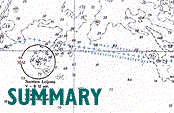
![[this page]](kuvat/navmuyla/4conten.gif)
